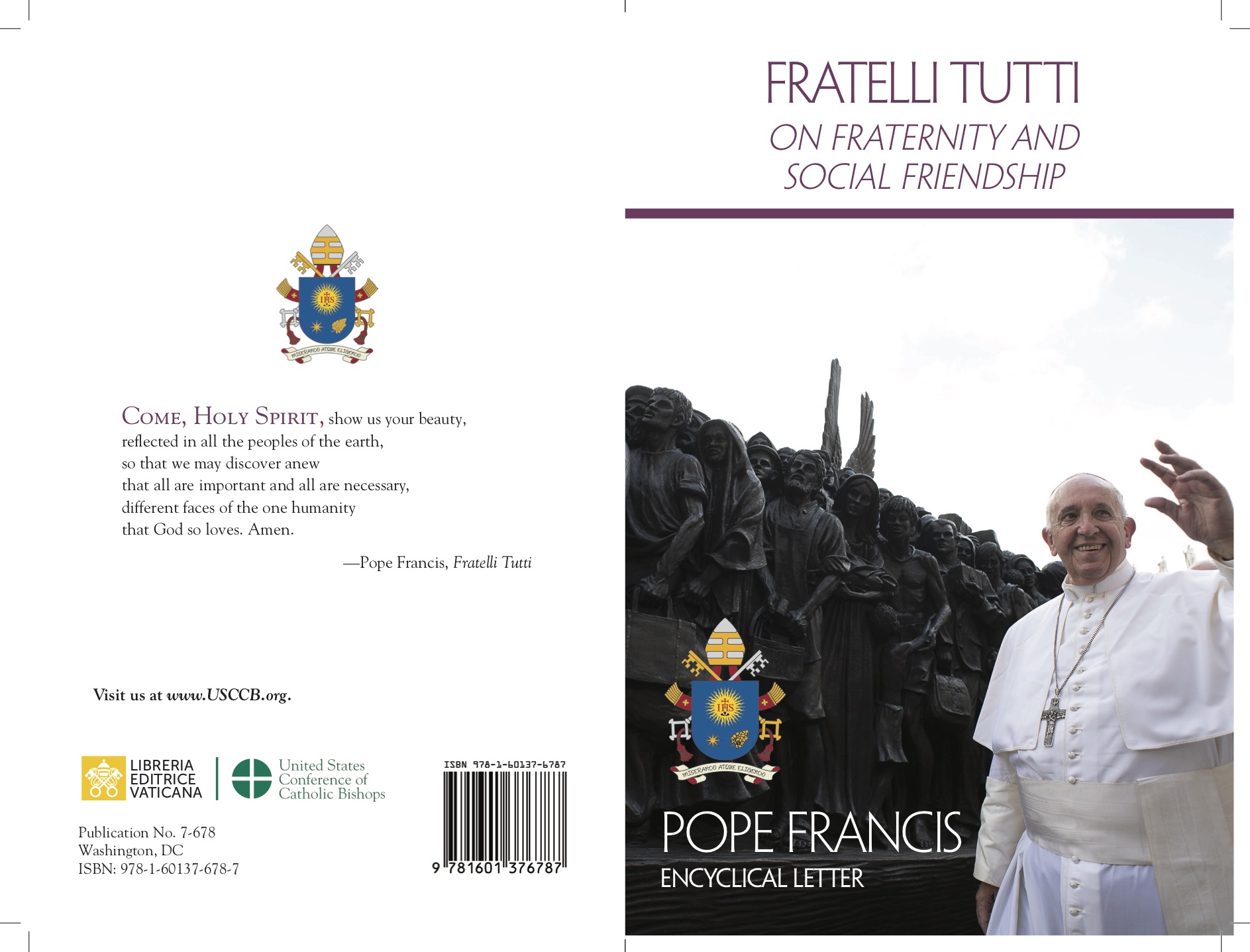
“But I can show the trophies of the apostles. For if you will go to the Vatican or to the Ostian way, you will find the trophies of those who laid the foundations of this church” (Eusebius, Church History, 2,25, 6-7).
Some time around 200 A.D. during Pope Zefirino’s pontificate, the priest Gaius used the above words borrowed from Eusebius, Bishop of Caesarea, to invite Proclus the heretic to visit the tomb of Saint Peter in the Vatican, along with Saint Paul’s tomb. [It was] a small monument described as a tropaiòn in Greek, that is, “monument of victory” befitting someone who had defeated death through the profession of faith and martyrdom. Despite the lofty word, in reality, it was a small funeral shrine built 100 years after Saint Peter’s death, near a red-plastered wall on which an anonymous pilgrim had written some meaningful Greek letters: Pétros eni (Peter is here), or, speaking still of Peter’s presence, Pétros eni[réne] (Peter in peace) [Figure 1**]. That shrine was — already in the second century — the longed-for destination of the first pilgrims who arrived in Rome to the burial place of the Apostle Peter in the Vatican.
Since then the ad limina Petri pilgrimage has never been interrupted, and has experienced incremental growth, especially during jubilee years.
One hundred years after the construction of the “Trophy” recalled by the priest Gaius, a small room dedicated to Petrine worship was built near the shrine. It was a room with plastered walls on which pilgrims arriving between the end of the third and the beginning of the fourth centuries, inscribed their names, the christogram and Peter’s initials, in Latin. The so-called “graffiti wall”, still visible beneath the main altar, constitutes an eloquent witness of that custom linked to the pilgrimage and to devotion to Saint Peter.
Over the years, the number of faithful who went to Rome to pray at Saint Peter’s humble burial site grew. Constantine thus enclosed the second-century funeral shrine, which was located near the Vatican Circus where Saint Peter was martyred in the 10th year of Nero’s princedom, and the “graffiti wall” above the venerated Petrine tomb, in a “monument-tomb”. He covered it in precious marble, which is still partly visible today. In the year 333 Eusebius of Caesarea described the monument as “a splendid tomb before the city, a tomb to which innumerable hordes flock from every part of the Roman empire, as a great Shrine and temple of God” (Eusebius of Caesarea, Theophany, 47) [Figure 2].
Emperor Constantine and Pope Sylvester decided to build a magnificent basilica over Saint Peter’s tomb, one with five naves and 88 columns; a large basilica, huge, the largest Christian temple of the time. Suffice it to think that it was built on an artificial terracing with a surface area of nearly two hectares. This involved removing enormous quantities of dirt, filling in a necropolis that was still in use and raising powerful foundation walls. It was a truly extraordinary feat in construction!
From then on, the Basilica was visited by the faithful from around the world, as revealed by the numerous coins (nearly 2,000) that were rediscovered during the celebrated Esplorazioni sotto la Confessione di San Pietro in Vaticano. They were the modest donations of anonymous pilgrims, many of whom had stayed in hostels or in the “scholae peregrinorum” (pilgrim homes) that cropped up around the old basilica in the Middle Ages: “Schola Saxorum” which later became “Schola Anglorum”; “Schola Francorum”; “Schola Longobardorum”; “Schola Frisonum”; and, later, “Schola Ungarorum”. Testifying to the existence of these “scholae” today is the “Teutonic Cemetery”, the eternal resting place of German Catholics, located in front of the Square of the Roman Protomartyrs in the Vatican, in the shadows of the dome that rises, mighty and grandiose, above Peter’s tomb.
The first Petrine basilica of the fourth century was large, certainly larger than what was necessary at the time, which was the result of a studied “vocation of welcoming” that inspired even the Popes of the Renaissance in the construction of the new Saint Peter’s [Figure 3].
In fact, the current basilica covers a surface area of more than two hectares — 22,000 square meters to be precise — and is visited by an ever larger number of pilgrims and visitors — close to 50,000 people daily, sometimes even more. The Basilica of Saint Peter — the old and the new one — was therefore conceived to be large from the very beginning in order to welcome — as Eusebius of Caesarea wrote — “the innumerable hordes that flock from every part of the Roman empire”.
A welcome meant for everyone: people of all ages and places of origin, of all religions and of no religion. A welcome that Pope Alexander vii Chigi (1655-1667) wanted to translate into a symbolic embrace in the spectacular Saint Peter’s Square. In fact, its magnificent colonnaded semicircles, which curve in an arch to open onto Urbi et Orbi (Rome and the World), represent the embrace of the Church led by the Pope, the successor of Peter. But it is also an invitation to enter into the basilica, an invitation to each one of us, from the elected ranks of the saints, whose giant statues — 140 of them, more than three metres tall! — rise above the 284 16-metre tall columns that make up the colonnade (arranged in four rows). It is an invitation to enter “Peter’s House”, the “holy home of the apostle, mother, splendor and pride of all these churches”, as was written in the inscription that Pope Innocent iii (1198-1216) wanted for the restored apse mosaic of the ancient basilica, but also an invitation to become “living stones” of Christ’s Church, to undertake an interior journey, to live one’s life according to the Gospel and following the example of the Saints.
But it is above all the central door of Saint Peter, which physically delineates the entrance to the Vatican temple, evoking an ulterior and explicit sense of welcoming. On that bronze door (nearly eight metres tall) from the 1400s, which already opened onto the large nave of the old basilica, we can see the apostles Peter and Paul, wearing oriental clothing beneath their tunics. They are surrounded by inscriptions in Latin, Arabic, Hebrew and Armenian, highlighting that the basilica — the old as well as the new — has always been a place of welcoming for all the peoples of the earth.
The announcement of the first Jubilee in history is inscribed in the portico, the sacred space between the colonnade of the large square and the vastness of the basilica. It was a Jubilee that arose in a climate of strong religious fervour in which a growing number of pilgrims visited Saint Peter’s Basilica. The epigraph reports the date of 22 February 1300, feast of the Chair of Saint Peter, when Pope Boniface viii (1294-1303) announced a plenary indulgence, during a solemn celebration in the Vatican basilica: To all those, reads the inscription, that in the present year 1300, which has just begun on the just passed feast of the Nativity of Our Lord Jesus Christ, and in any following hundredth year, will reverently enter the said basilicas (those of St. Peter and St. Paul) truly repentant and confessed, and to those who truly repent and confess in this present hundredth year and in any hundredth year to come, we grant not only full and copious, but the most full pardon of all their sins (...) [Figure 4].
A few decades after Clement iv (1342-1352) reduced the time between Jubilees to 50 years and Urban vi (1378-1389) reduced it to 33, referring to Jesus’ time on earth, but already since the beginning of the 15th century, the tradition of celebrating Jubilees every 25 years, which we still observe, had taken root. It was formally ratified in 1470 by Pope Paul ii Barbo (1464-1471). In 1500 Pope Alexander vi Borgia (1492-1503) decided that the Holy Doors of the four Basilicas would be opened at the same time, while he himself opened the Holy Door of Saint Peter, which he had renovated.
But when was the Holy Door introduced into the Vatican Basilica?
In the 1600s, Giacomo Grimaldi (1568-1623), beneficed cleric and archivist of the Vatican Chapter, regretfully admitted that he had not been able to find any documentation on this. Recent detailed studies by Antonella Ballardini attribute the introduction of a Holy Door in Saint Peter’s to Pope Nicholas v Parentuccelli (1447-1455) the educated and enterprising Pontiff who had celebrated the Great Jubilee of 1450. A sixth door was added to the façade of the old basilica, a small door (“Porta parvula”) a gilded door (“porta aurea”), a walled-in door without panels to be opened only on Jubilee years. This door led to the northern nave of the old basilica, inside the ancient oratory of John vii (705-707) where the altar of the Mother of God (Theotokos) and the highly worshipped altar of the Holy Face were located. That small gilded porta parvula which was depicted by Beato Angelico in the frescoes he painted in the Niccoline Chapel [Figure 5], was replaced in 1499 with a new “Holy Door”, placed in the space that had contained the above-mentioned altar of the Mother of God, which had been removed by Pope Sixtus iv Della Rovere (1471-1484) on the eve of the Jubilee Year of 1475.
In the new basilica, the Holy Door was located on the internal façade at the northern end of the atrium. As in the past, this door (only to be used to enter, not to exit) was intentionally built small and narrow. “Enter by the narrow gate; for the gate is wide and the way is easy, that leads to destruction”, (Mt 7:13-14; cf. Lk 13:23-24; Ps 118,20).
In line with tradition, the opening for the door, continued to be walled-in at the end of each Holy Year, whether ordinary, that is connected to a pre-established cycle or extraordinary, when announced for a particularly important event [Figure 6].
In the Jubilee of 1950, a decision was made to build two bronze door panels for the opening of Saint Peter’s Holy Door, to close it, not in a permanent way, but at night time throughout the Holy Year. At the end of the 1975 Jubilee, Saint Paul vi established the permanent location for the two bronze panels which we still admire today. He thus changed the ritual of opening and closing the Holy Door, giving importance not to the destruction and rebuilding of the brick wall, but rather to the symbolic gesture of the Pope opening and closing that door [Figure 7].
In earlier times, the ritual of opening the Holy Door included breaking down the hundreds of overlapping bricks held together without mortar, that comprised the wall, which bore the coat of arms of the Fabric of Saint Peter, the date and the name of the Pontiff who had closed the door. After the Pope symbolically struck the front side of the wall with a hammer three times [Figure 8], this was destroyed by the capable work of the “Sanpietrini” who had previously put the wall on a special wooden structure built for the occasion.
The origins of the bronze panels of the Holy Door date back to the time between the first and second phase of the July 1947 bidding competition for the construction of the Basilica of Saint Peter’s three main doors. Prince Georg of Bavaria, priest and ordinary canon of the Basilica (died 1943), had left a donation in his will for this purpose. At that time in fact, with the exception of the Filarete Door, the big doors of the Basilica were still made of wood. And very modestly built.
The Commission in charge of examining the bids did not think that any of the 80 sketches submitted was suitable. So the Cardinal Archpriest of the Basilica, who was in charge of the Commission, decided to award a gold medal to 12 of the artists who had distinguished themselves in this first phase of the bidding, at the same time inviting them to the second phase.
Msgr Ludovico Kaas, treasury secretary of the Fabric of Saint Peter and secretary of the Commission for the bidding, decided to directly appoint sculptor Vico Consorti (1902-1979) to complete the doors of the Vatican Basilica’s two new panels. He was among the artists who had submitted their bid, but he was selected outside the confines of the competition.
Msgr Kaas also chose the theme of the Door and the events that should be depicted on it, inspired by Pius xii’s expressions in his prayer: “Grant, O Lord, that this Holy Year be the year of the great return and great forgiveness” and supported by some advisors, first among them Msgr Arthur Wynen [Figure 9].
Completed in 1949 following nine months of continuous and demanding work, including at the Fonderia Fernando Marinelli, the Door is made of 16 bas reliefs in gilded bronze depicting scenes from the Old and the New Testament highlighted by inscriptions and by 12 panels with the coat of arms of the Popes who have celebrated a Jubilee year: from Boniface viii to Pope Francis.
It is a door that is capable of “speaking” to people through admirable bas reliefs which, as Cardinal Angelo Comastri wrote, “record the history of the Mercy of God which constantly comes towards us: the Holy Door is a symbol which gives visibility to these words of Jesus: ‘I am the door; if any one enters by me, he will be saved, and will go in and out and find pasture’” (Jn 10:9).
* Head of the Necropolis and Artistic Heritage Section of the Fabric of Saint Peter
** Images courtesy of the Fabric of Saint Peter (nos. 1-4, 6, 8-9) and the Vatican Museums (no. 5)
Pietro Zander













 Purchase the Encyclical here Fratelli Tutti
Purchase the Encyclical here Fratelli Tutti
